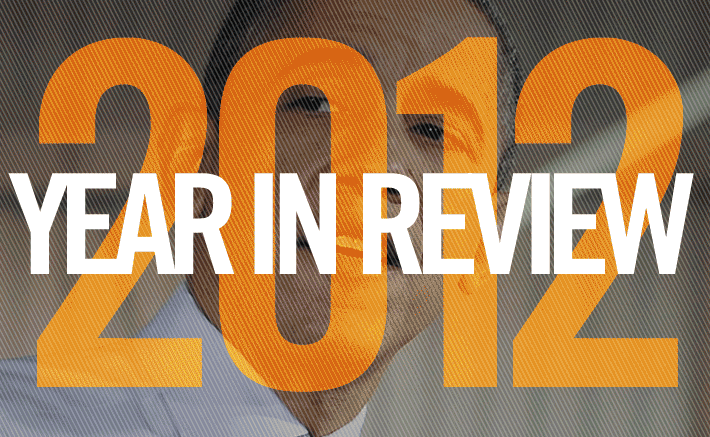
By Kaitlyn Piccoli and Brad Pareso
The sight of a rotary phone confuses them, but they can write a text message faster than you can blink. They are young enough to know everything there is to know about Google, but old enough to feel the pain of a recession. They are a generation caught amidst waning old-school values and free Internet porn.
As the youngest children of the last vestige of Baby Boomer parents, they have been coddled by a generation that read Dr. Spock and screamed through Beatlemania. And those experiences have led to the upbringing of a generation of Trophy Kids.
This is the M.O. of a Millennial, and they are entering the workforce in droves. Their path to the workplace is a one-way street—rather than retire at 65, many older workers stay at their jobs because of the dismal economy and disintegration of their Social Security blanket, forcing them to coexist with younger workers raised in a completely different era.
Generation Information
It is no secret that the office of the 21st century is a battleground. For the first time in history, four generations are struggling to coexist in a workplace that is not tailored to any specific one of them.
Part of that problem is a lack of a formal definition for each generation—like trying to navigate without a map. To attempt a definition is to tread in murky waters, as the parameters for where each generation starts and ends have become increasingly blurred.
The 2008 World of Work Employee Survey, published annually by Randstad U.S., a national division of the global staffing company, pegs the Mature generation as anyone born before the year 1946. The U.S. Census Bureau agrees. The bureau also says the next generation, Baby Boomers, were born between 1946 and 1964, as does the Randstad survey.
Generation X is where things begin to get tricky. The firm start and end dates that bookend the Matures and Baby Boomers start to get hazy, as rapid cultural shifts in the past few decades have made it more and more difficult to pinpoint the personalities of newer generations: Randstad’s survey has the generation falling between 1965 and 1980. Diane Thielfoldt and Devon Scheef, authors of Generation X and The Millennials: What You Need To Know About Mentoring The New Generations and founders of The Learning Café, a group aimed at creating peace between generations in the workplace, have a slightly narrower time frame of 1965 and 1976. “Scanning the Horizons,” an annual summary of trends in the U.S., places Generation X in four different age brackets.
And Generation Y is even more convoluted. With no reliable beginning, reported age ranges for the group are a dime a dozen. Thielfoldt and Scheef say 1977 to 1998. Randstad says 1980 to 1990. Ron Alsop, author of The Trophy Kids Grow Up: How The Millennial Generation Is Shaking Up The Workplace, says 1980 to 2001. The “Scanning the Horizons” report has three brackets. Wikipedia cites 14 sources for its vague “mid 1970s to early 1990s” span.
And wedged into the vague Generation Y moniker—on the younger end of Gen Y, with birth dates ranging from 1982 to 2000—are the Millennials. Also known as Generation Z, Gen@, Gen Next and Echo Boomers (just to name a few), they are the newest graduates and are reinventing the way things are run—for good and for bad.
“While they crave success and compete fiercely to land a spot in the very best colleges and companies, they also can be very generous and have a passion for making the world a better place,” says Alsop. “But above all, the Millennial generation is considered overly demanding and unrealistic in its expectations.”
That is a broad definition of the Millennials, and while there’s a long list of positives and negatives, the latter stand out more than the former—in the same Randstad survey, 20 percent strongly associate Generation Y co-workers with being competent. Not a completely off-putting statistic by itself. But the percent of Mature-generation employees that said they strongly view their Millennial co-workers as having a strong work ethic? Three percent. And a response that low leads to a hostile work environment.
Communication Breakdown
At the end of every school year at Lynbrook High School, the faculty has an end-of-the-year brunch to celebrate the close of another year and thank each other for their diligent work. Karen Rothman (name has been changed), a 22-year-old recent Hofstra graduate who was filling in for a teacher on maternity leave since May, thought about the prospect of eating French toast and bacon with her older co-workers, some of whom were her teachers when she was a student there.
For Karen, it was an easy decision—she ditched the brunch and went out to do errands with her lone Millennial counterpart, a 28-year-old fellow teacher. While this single incident probably wouldn’t raise too many eyebrows, it is a small example of a growing trend.
“There are cliques within teachers, for sure,” Rothman says. “It’s like high school with adults.”







